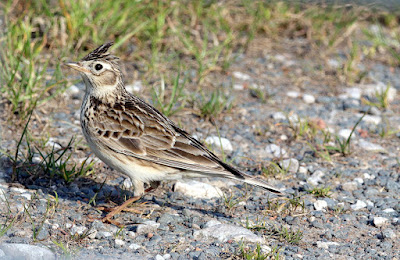New books arrive thick and fast. Up for consideration today are two books released together as companion field guides to North American raptors - Birds of Prey of the West & Birds of Prey of the East. The two are due for publication any day but for the benefit of readers of this blog, I managed to get my hands on a copy of each hot off the Princeton press.
Birds of Prey of The West - Princeton Press
Birds of Prey of the East - Princeton Press
After the run of photographic field guides and PC & IPhone apps of recent years I felt somewhat relieved to see that the art of the classic field guide is not lost but alive and well in these two volumes from Brian K Wheeler.
A glance at the author’s unbeatable CV gives a clue as to the expertise displayed in these two superb books.
“Brian K. Wheeler has been studying, painting, and photographing birds of prey throughout the United States and Canada for more than fifty years. He is the illustrator of Hawks of North America (Peterson Field Guides), the co-author and photographer of A Photographic Guide to North American Raptors, and the author and photographer of Raptors of Eastern North America and Raptors of Western North America. His photographs have appeared in many other books and in many bird magazines.”
In the author’s own words. “The journey began when I was seven years old, when I earnestly started drawing birds and mammals, first on old canvas pieces, then on cardboard, and then on white watercolor paper with transparent watercolor paint. Later, I used the thicker opaque watercolor medium called gouache."
"My first watercolor paintings of wildlife date back to age 12, and I sold my first painting when I was fourteen. Painting wildlife and especially birds was my passion, and I drew or painted every day. By my early twenties, I concentrated mainly on birds. My late teens and twenties were spent learning bird anatomy. I spent much time with waterfowl hunters and preparing road and window killed specimens for museums.”
Both books are lavishly illustrated with really stunning, lifelike paintings which depict an enormous range of variations of age, sex, colour, and plumage. Princeton claims that the two books “feature a significant amount of plumage data that has never been published before”. I have no reason to doubt that given the dazzling number of plates and the variety contained therein.
The painted figures illustrate plumage and species comparisons in a classic field-guide layout with each species shown in the same posture and from the same viewpoint, which further assists comparisons.
Red-tailed Hawk - Birds of Prey of The East
Bald Eagle - Birds of Prey of the East
Facing pages of text include quick-reference identification points and brief natural history accounts that incorporate the latest information. There are rather few bird photographs in either volume but where included they are of the best quality to illustrate a particular point, e.g, the authors explanation of the difficulties in re-establishing the Aplomado Falcon in the wild.
Snail Kite - Birds of Prey of the East
Range maps appear exceptionally detailed and accurate and much larger than those in other guides, often full page as shown below. The maps also show up-to-date distribution information for each species and include the location of cities for more accurate reference points for the reader.
Turkey Vulture - Birds of Prey of the West
Something rather new and extremely useful in this type of classic field guide is the inclusion of colour habitat photographs and brief explanatory notes next to the maps. A location is all very well but for the author to show the reader the actual habitat to explore is a beyond handy indeed.
"Wyoming. Note excrement whitewash below aerie left of pine tree in the foreground midway on cliff face”! My exclamation.
Despite the author’s scholarly approach and experience the guides never lapse into jargon or become overly scientific; they remain accessible and highly readable throughout. These are mighty books for raptor enthusiasts who take their birds of prey seriously. They represent a new standard for bird field guides. They go beyond the definition of a guide and reach into the realms of dissertation, systematic study and detailed exploration.
I really cannot praise these two volumes enough. Both are “must-haves” for the serious raptor aficionado.
Available now at Princeton Press and Princeton Press at $27.95 or £22.00 for each volume.
Linking today to Anni's Texas Bird Blog.
Linking today to Anni's Texas Bird Blog.











































































































